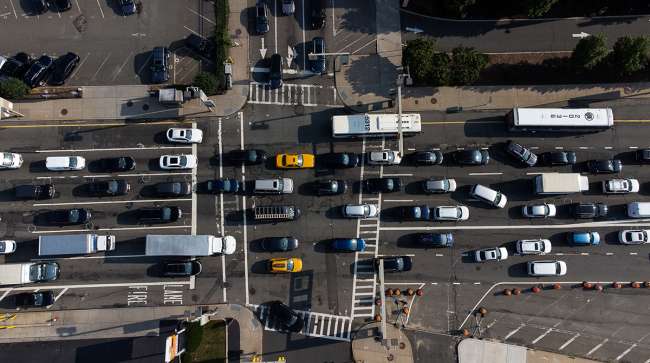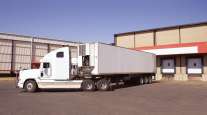Senior Reporter
ATRI: US Highways Congestion Hit Record High in 2022

[Stay on top of transportation news: Get TTNews in your inbox.]
Snarled traffic on U.S. highways added $108.8 billion in costs to the trucking industry in 2022, up from $94.6 billion in 2021, according to a new Cost of Congestion study published by the American Transportation Research Institute.
The study, part of ATRI’s ongoing highway-performance measurement research, marks a record-high national congestion cost.
ATRI utilized a variety of data sources, including its substantial truck GPS database and Operational Costs benchmarks, to calculate the impact of trucking delays on major U.S. roadways.
“While the total hours of congestion decreased slightly in 2022 from record 2021 highs due to a softening freight market, the cost of operating a truck during this period increased at a much greater rate,” said the study, made public Jan. 28. “As a result, the overall cost of congestion increased by 15% year over year.
“This level of delay is equivalent to more than 430,000 commercial truck drivers sitting idle for one work year and an average cost of $7,588 for every registered combination truck.”
David Bell, CEO of CloneOps.ai, discusses the impact of AI on the trucking industry. Tune in above or by going to RoadSigns.ttnews.com.
Texas overtook California with the highest state truck congestion costs in the country — $9.1 billion in 2022. The top four states — Texas, California, Florida and New York — made up 29.6% of the nation’s total.
ATRI’s analysis also found that the trucking industry wasted more than 6.4 billion gallons of diesel fuel in 2022 due to congestion, resulting in additional fuel costs of $32.1 billion.
“With rising costs putting pressure on businesses and consumers alike, minimizing delays caused by congestion is more important than ever,” said Frank Granieri, A. Duie Pyle chief operating officer of Supply Chain Solutions. “Addressing these challenges requires a shared commitment to modernize our infrastructure and strengthen the backbone of our economy: resilient and efficient supply chains.”
A. Duie Pyle ranks No. 57 on the Transport Topics Top 100 list of the largest for-hire carriers in North America.

Granieri
Since the passing of the 2021 Infrastructure Investment and Jobs Act, congestion has been a focal point for collaboration among industry advocates, government and local communities, ATRI said. In 2022, the federal government spent $52 billion on highways through a variety of programs, several of which were established by IIJA specifically to target congestion. State and local governments spent an additional $180 billion on highways during the year; combined government spending was equivalent to 0.92% of gross domestic product.
Recent research affirms that, in addition to improving supply chain efficiency, infrastructure spending is an effective fiscal stimulus. However, it is not clear whether all this infrastructure investment was adequately targeted to traffic congestion hot spots and bottlenecks, which is where strategic investments are most needed.
The most critical factor for the cost of congestion in 2022 was increased operating costs.
Want more news? Listen to today's daily briefing above or go here for more info
The marginal costs to operate a truck include line items such as fuel, truck and trailer purchases and leases, repair and maintenance, tires, insurance premiums, tolls, permits and licenses, and truck driver wages and benefits. These costs reflect a wide range of economic factors such as freight demand, global oil production, litigation and labor markets, according to the study.
In 2022, per-hour operational costs soared by 21.6% to a then-record high of $90.78. This steep rate of increase was driven by an array of internal and external factors, often unique to individual line items, including:
• The price of diesel rose sharply after the U.S. prohibition on new domestic drilling leases in early 2021 and later the Russian invasion of Ukraine in February 2022.
• Limited availability of new Classes 7-8 truck tractors and components after the COVID-19 pandemic — due to production backlogs and supply issues for parts such as computer chips — continued to drive prices up in the new-, used-, and leased-truck markets.
• Limited access to equipment meant that fleets had to run trucks longer than usual, resulting in significantly higher repair and maintenance costs. Growing inflation and backlogs further increased parts prices, while a diesel technician shortage drove up the cost of technician labor.
• A highly competitive U.S. labor market also fueled a 12.3% increase in total driver compensation (wages plus benefits).





